How Visual Storytelling Transforms Horror in Modern Comics
Introduction: The Evolution of Horror in Modern Comics
Modern horror comics have become a powerful vessel for visual storytelling, blending elements of shock, fascination, and reflection. The genre’s evolution demonstrates how creators utilize graphic imagery to push creative boundaries, often drawing discomfort and awe from readers. Visionaries like Shintaro Kago redefine body horror, as evident in his unforgettable depictions of grotesque transformations and the art of visual collapse. Indie horror comics, such as those by Chuck Forsman and Josh Simmons, delve into dark realism and emotional violence, proving that the most haunting experiences emerge from confronting harsh truths. These works exemplify the genre’s capacity to provoke visceral and cerebral reactions.
The Role of Visual Storytelling in Enhancing Atmosphere and Mood
Modern horror comics excel at evoking visceral reactions through visual storytelling, weaving atmosphere and mood into every panel. Artists like Shintaro Kago, instrumental in redefining body horror, use intricate, nightmarish imagery to unsettle the reader, creating an unparalleled sense of dread. His most unforgettable body horror moments rely on a collapsing visual structure, symbolizing the disintegration of reality. Similarly, Josh Simmons manipulates space as emotional violence, stretching silences and isolating characters to heighten tension. Chuck Forsman, who delves into dark, real-life comics, employs grounded visuals to amplify the stark horror of everyday struggles. Through detailed imagery, such creators push creative boundaries, blending disgust and fascination into haunting experiences.
Leveraging Color and Shadows to Evoke Emotional Responses
The top visual horror experiences in modern comics often hinge on the masterful interplay between color and shadow to elicit visceral reactions. Creators like Shintaro Kago, celebrated for redefining body horror, employ vivid palettes to contrast grotesque imagery with artistic precision, amplifying disgust and fascination. Likewise, Josh Simmons, the king of bleak horror comics, manipulates shadows to weaponize space, turning emptiness into emotional violence. Indie comics exploring dark, real-life themes, such as Chuck Forsman’s haunting narratives, use muted tones to reflect despair. Artists adapt hues and lighting techniques to evoke dread, pushing creative boundaries and immersing readers in their nightmarish worlds.
Panel Composition and Layout Techniques That Amplify Suspense
Modern comics leverage innovative panel structures to heighten horror experiences, with artists like Shintaro Kago and Josh Simmons redefining narrative space. Shintaro Kago’s mastery of body horror lies in his use of chaotic layouts that mirror grotesque distortion, as seen in his most unforgettable body horror moments, where fragmented panels create visual collapse. Similarly, Simmons manipulates panel spacing as emotional violence, amplifying bleak horror themes such as those explored in “The Furry Trap.”
Chuck Forsman employs minimalistic panel designs to evoke dark realism, while top horror indie comics utilize irregular compositions to unsettle viewers. Such techniques disgust, fascinate, and push creative boundaries by distorting reader expectations.
Character Design as a Medium for Psychological Horror
Character design in modern comics amplifies psychological horror by merging visual storytelling with emotional depth. Artists like Shintaro Kago redefine body horror through exaggerated, surreal anatomy, utilizing the “art of visual collapse” to unnerve readers. His most unforgettable body horror moments manipulate familiar forms into grotesque, fragmented distortions, compelling readers to confront existential discomfort.
Additionally, Josh Simmons employs minimalistic, stark character expressions to evoke emotional violence, making his comics hurt because they’re true. By stripping characters of overt theatrics, Simmons escalates tension subtly, reflecting bleak realities. Chuck Forsman’s grounded designs, rooted in dark real-life themes, confront readers with relatable yet haunting depictions, blurring fiction and reality. The focus on raw humanity ensures memorable, visceral experiences.
Case Studies: How Popular Comics Redefine Horror Through Visuals
Modern horror comics offer readers unique visual experiences, blending grotesque imagery and narrative depth to push artistic boundaries. Shintaro Kago’s work stands out in redefining body horror, with moments of “visual collapse” that dissect human anatomy through surreal fragmentation and unsettling distortions. His ability to disgust and fascinate simultaneously challenges conventions and cements his reputation with unforgettable creations.
Josh Simmons, often labeled the king of bleak horror comics, explores emotional violence by utilizing space—empty rooms, oppressive silence, and sparse panels—to unsettle readers. Chuck Forsman in his dark, real-life comics crafts haunting tales rooted in realism, giving his narratives chilling authenticity that lingers with audiences.
Conclusion: The Future of Horror Comics Through Visual Innovation
Horror comics continue to evolve by leveraging visual innovations to craft deeply disturbing yet captivating narratives. Creators like Shintaro Kago redefine body horror through the art of visual collapse, producing unforgettable moments that disgust and fascinate readers. His surreal manipulation of form pushes boundaries, earning him recognition as a master of the grotesque. Indie titles such as those by Josh Simmons and Chuck Forsman take a different path, exploring emotional violence and dark realities with unsettling truth. Simmons employs space as emotional violence, amplifying despair, while Forsman draws from raw human experiences. This dynamic interplay of creativity ensures horror comics persistently haunt readers’ dreams.

